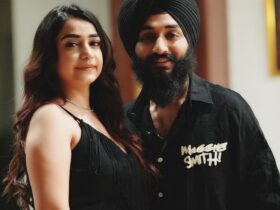Find out what causes gnats, how to get rid of them and how to make sure the gnats don’t return using a variety of methods.
Gnats, which are diminutive flying insects that occasionally infiltrate residential and gardening spaces, pose more than mere irritation. They have the potential to harm vegetation and may also lead to health issues.
What exactly is a gnat?

It is important to note that not all gnats are detrimental. In fact, some species contribute positively by pollinating plants and preying on garden pests. There are four small, flying species that are typically classified as gnats.
Drain flies:- These small insects commonly located in or near drains, sewers, septic tanks, and areas affected by sewage leaks.
Fruit flies:- They are attracted to decaying or fresh produce, moist organic materials, and liquids such as soft drinks, wine, and vinegar.
Phorid flies:- Similar to drain flies, are often found in proximity to garbage, drains, and decomposing fruits and vegetables.
Fungus gnats :- Typically inhabit overwatered houseplants, where decaying organic matter in the soil occurs. Their larvae feed on plant roots, leading to yellowing leaves, dropping foliage, or the wilting and death of entire plants. Additionally, fungus gnats can transmit a pathogen responsible for damping-off, a condition that can kill seeds before they germinate and weaken or eliminate seedlings shortly after sprouting.
What to Do About Gnats?

Gnats are not known to inflict damage on your home; however, they can lead to various issues. While all gnats possess the ability to bite, not every species has the necessary mouthparts to penetrate human skin. Those that can bite may transmit pathogens and diseases, resulting in symptoms such as itching, redness, irritation, and swelling. Should these symptoms arise, it may be advisable to consult a medical professional.
These small insects frequently gather around the moist soil of potted plants or near bruised or overripe fruit. Many are attracted to sweet and fruity aromas, as well as damp, decaying organic material. Certain species are also lured by sweat, body warmth, and the moisture present in our eyes.
Gnats frequently reproduce in or congregate around sinks, toilets, drains, garbage disposals, as well as both indoor and outdoor waste receptacles. Occasionally, we inadvertently introduce them into our homes via flowers, houseplants, and fresh produce.
How to Get Rid of Gnats

Gnats have a rapid reproduction rate and can multiply in significant quantities, necessitating the use of multiple strategies for their eradication. It is advisable to explore natural control methods prior to resorting to pesticides or insecticides.
How to Get Rid of Gnats in the House
1. Make a Gnat Trap
Use a small saucer to mix a few tablespoons of apple cider vinegar, a few drops of dishwashing soap and a little sugar. Put the saucer near the gnats. Use more than one saucer, if needed. The gnats will be drawn to the sweet solution, fall in and get trapped. Replace the solution often, until they’re gone.
2. Use Flypaper
Hang sticky flypaper ribbons to catch gnats, but be careful where you put them. They’ll grab onto almost anything, including your curtains, hair and furniture. Don’t use them outdoors, where they’ll trap beneficial creatures.
3. Clean Drains
Slowly pour 1/2 cup bleach, diluted with a gallon of water, down your drain. Follow by rinsing the drain with plenty of hot water. You can also use a drain cleaning product labeled for this kind of pest control; follow the directions on the label.
4. Set a Fruit Trap
Put an overripe apple or banana in a bowl covered with plastic wrap. Punch a few holes in the wrap. Gnats that get into the bowl will be trapped so you can dispose of them.
5. Use Leftover Wine
Leave an almost-empty red wine bottle near your kitchen drain. Gnats that crawl inside to reach the alcohol won’t be able to escape.
6. Spray
Use an insecticidal spray made for indoor use.
7. Call a Pro
If gnats keep coming back, or you have a serious infestation, call a professional pest control company for help.
Approaches to Remove Gnats from Indoor Plants

8. Lure Them to Sticky Cards
Gnats are drawn to the color yellow and can be trapped on special yellow cards covered with a sticky adhesive. For best results, use small cards or cut larger ones into small squares. Lay them on the soil in your potted plants or attach them to twigs or skewers stuck into the pots. Once the traps are full, discard them in an outside trash can.
9. Food-Grade Diatomaceous Earth
DE, as it’s known, is an organic, abrasive powder you can buy to sprinkle over the dry soil in your plants. It will trap the gnats until they die from dehydration. Don’t apply it when the soil is wet or it won’t work. To make sure the DE stays dry, put some sand on top of your potting soil and then apply it. Water your plants from the bottom while using it.
10. Drench the Soil
Bacillus thuringiensis (Bt) is a bacterium that occurs naturally in the soil. Bt var. israelensis (Bti) kills the larvae of fungus gnats. Follow the directions on your product to make a Bti drench and saturate the soil in your potted plants. It will coat the plant roots without harming them and kill fungus gnat larvae that try to feed on them.
11. Let Plants Dry Out Slightly
Let your plants dry out slightly between waterings so any gnat eggs or larvae in the soil will die. If your pots don’t already have drainage holes, make some.
12. Repot
If the gnats keep coming back, repot your plants in clean containers with fresh potting soil.
Strategies for Gnat Prevention
To prevent gnats from entering your home, it is essential to seal any cracks, holes, and crevices found in doors, walls, windows, and the foundation. Additionally, ensure that window screens are repaired or replaced if they are torn or damaged.
After meals, promptly store food and beverages, and clean any spills. It is advisable not to leave pet food out and to wash pet bowls on a daily basis.
Regularly inspect both indoor and outdoor plumbing for leaks, and monitor for persistently damp soil around downspouts or beneath gutters. Eliminate moist areas that may serve as breeding grounds for gnats, such as compost and leaf piles, and maintain cleanliness in birdbaths, fountains, and other water features.
Utilize trash cans equipped with tightly fitting lids and dispose of indoor waste on a daily basis. Ensure that compost piles and outdoor trash containers are situated at least 15 feet away from your residence.
Store fruits and vegetables in the refrigerator rather than on the countertop. Note that certain items, such as bananas, tomatoes, and pears, should not be refrigerated to allow for proper ripening. Always wash fruits and vegetables before storing them.
Effective Strategies for Eliminating Gnats in Outdoor Environments
Rather than applying a Bti drench to outdoor plants, consider placing a mosquito dunk, which is labeled as safe for pets and wildlife, into a watering can or bucket. Allow the dunk to dissolve sufficiently to release its insecticidal bacteria into the water. Subsequently, pour this water onto the soil of your outdoor plants. Repeat this process over several weeks to ensure the elimination of any gnat larvae present in the soil.
It is advisable to avoid using electric pest traps for gnats, as they can inadvertently harm beneficial insects as well. While traps that utilize ultraviolet lights may capture gnats, they are limited to adult insects, leaving larvae to develop and reproduce.
Some gnats are attracted to outdoor lighting. To mitigate this issue, consider using yellow “bug lights” or low-voltage bulbs, or alternatively, keep lights near doors and windows turned off.
If you experience bites without being able to identify the source, the culprits may be tiny biting midges, commonly referred to as sand gnats or no-see-ums. To prevent encounters with these pests, it is advisable to remain indoors on damp, overcast days when the air is still, or to wear protective clothing when outdoors. The use of insect repellents and insect-repellent clothing may also provide additional protection.















Leave a Reply